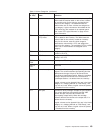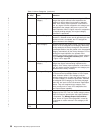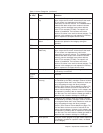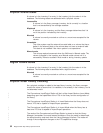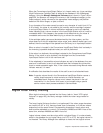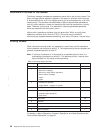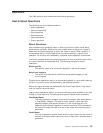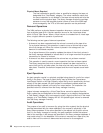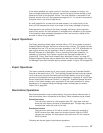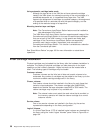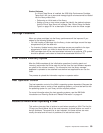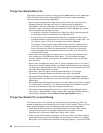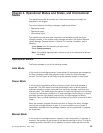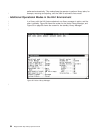If the volser specified is a logical volume in the library manager’s inventory, the
library manager determines the physical volume the logical volume resides on and
performs an audit of that physical volume. The audit operation is successful if the
physical volume is found in the expected storage cell or if it is currently mounted on
a physical drive in the Virtual Tape Server.
An audit operation for a volser that has been placed in an output facility of the
library will fail because the volser is no longer in the library manager’s inventory.
Audit operations are queued in the library manager and have a lower execution
priority than mounts. An audit operation is complete when validation of the location
of the specified volser has been attempted and the host has been notified of the
success or failure of the validation.
Export Operations
The Export operation allows logical volumes within a VTS to be copied to physical
Exported Stacked Volumes that can be removed from a library. The logical volumes
are deleted from the VTS and are no longer accessible in the VTS. A destination for
each logical volume may be specified in order to create one or more Exported
Stacked Volumes for a destination. Prior to executing the Export operation, it is
necessary to provide a list of logical volumes to be exported as described in
“Appendix B. Virtual Tape Server Import/Export Advanced Function” on page 307.
Exported Stacked Volumes may be ejected from the Export-Hold category by using
the Manage Export-Hold Volumes pop-up window, shown in Figure 132 on page 206
.
Import Operations
The Import operation allows one or more logical volumes from Exported Stacked
Volumes to be copied into a VTS. The Exported Stacked Volumes must be inserted
into the library by using the Convenience Input⁄Output Station and a list of logical
volumes to be imported must be provided as described in “Appendix B. Virtual Tape
Server Import/Export Advanced Function” on page 307. Exported Stacked Volumes
remain in the Import category upon completion of the Import operation for further
disposition by an operator using the Manage Import Volumes pop-up window,
Figure 130 on page 204.
Stand-Alone Operations
Stand-alone operations may be performed by using stand-alone software when a
host cannot send mount commands to the library. Some examples are as follows:
Stand-alone dump
The host must receive an initial program load (IPL) from tape, and then
dump the host memory contents to a separate tape. The tape may then be
mounted later under the control of a host.
Stand-alone restore
The host must receive an IPL with a function to restore the contents of
DASD volumes from data stored on the tape volumes. After the DASD
volumes are restored, the host system may receive an IPL with restored
DASD volumes.
Following are the two types of stand-alone operations:
Chapter 3. Operational Characteristics 57
|
|
|
|
|
|
|
|
|
|
|
|
|
|
|
|
|
|
|
|
|



